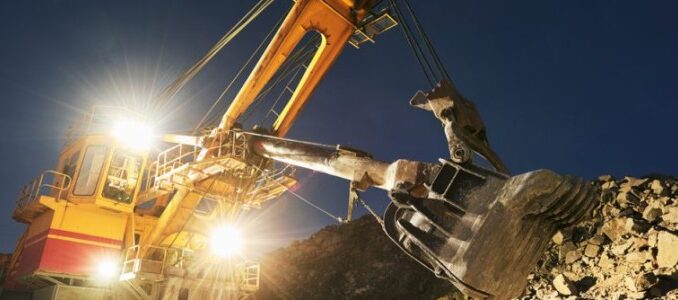
In a bold push to secure America’s supply of critical minerals amid escalating tensions with China, the Trump administration has been making significant investments in Canadian mining companies. This strategy, highlighted in a recent analysis by OilPrice.com, aims to reduce U.S. dependence on Chinese-dominated supply chains for rare earth elements essential to defense, electronics, and clean energy technologies.
But as these deals unfold, a brewing separatist movement in Alberta adds an intriguing layer of uncertainty—and opportunity—to the equation.
The Trump Administration’s Strategic Moves
The U.S. government’s recent acquisition of a 10% stake in Trilogy Metals (NYSE:TMQ), a Canadian rare earths developer, has sent shockwaves through the industry. The deal, which includes warrants for an additional 7.5% stake, caused Trilogy’s shares to surge nearly 140% in a single day, pushing the company’s market cap toward $1 billion.
This follows similar investments, including a Department of Energy agreement with Canada’s Lithium Americas (NYSE:LAC) and a Department of Defense stake in U.S.-based MP Materials (NYSE:MP).
These actions are part of a broader effort to build resilient domestic supply chains. For instance, the Trump administration reversed a Biden-era ban on the Ambler Road project in Alaska, unlocking access to rich deposits of copper, cobalt, and other critical minerals in the remote Ambler Mining District.
The MP Materials deal is particularly ambitious, involving a $400 million preferred share issuance, a $150 million loan, and a $1 billion private financing package, with construction underway for a new facility set to commission in 2028.
Got Questions on investing in oil and gas? Or do you have a Tax Burden in 2025
It even includes a price floor guarantee for neodymium-praseodymium magnets at $110/kg—nearly double the current spot price.
The timing couldn’t be more critical. China recently expanded export controls on five additional rare earth metals, bringing the total to 12 under strict oversight.
With U.S.-China trade talks stalling and tariffs as high as 64.9% on Chinese products, these investments signal Washington’s determination to diversify sources.
As Energy Fuels CEO Mark Chalmers noted, more such deals are needed to break U.S. reliance on China.
Raising Eyebrows: Ethical and Regulatory Concerns
Not everyone is cheering. The Trilogy deal has sparked debates over conflicts of interest, as a foreign government takes equity in a Canadian firm.
York University professor Richard Leblanc called it “absolutely a conflict of interest,” highlighting the rarity of such arrangements and potential regulatory influence.
Canadian officials, including Ontario Premier Doug Ford, have pushed back, insisting U.S. hands stay off Canadian minerals.
Ottawa plans to review these investments case-by-case, with the power to block them if needed.
Market reactions have been volatile. Rare earth stocks like NioCorp Developments (up 603% YTD) and Ramaco Resources (up 412%) have soared, but broader U.S. markets dipped amid tariff threats.
Alberta’s Separatist Stirrings: A Wild Card in the Mix
Adding complexity is Alberta’s growing independence movement, often dubbed “Wexit.” Premier Danielle Smith has fueled discussions, though she recently urged Trump to stay out of the fray.
The Alberta Prosperity Project (APP) filed a petition for a full secession referendum, with courts set to review it in November 2025.
Polls show support around 30%, but momentum is building, with some envisioning Alberta as a resource-rich independent nation or even aligning with the U.S.
Alberta, Canada’s energy powerhouse producing 4.3 million barrels of oil daily, also holds untapped potential in critical minerals like lithium, vanadium, rare earths, and potash.
Companies such as E3 Lithium are advancing projects to produce battery-grade lithium from brines, positioning the province as a potential hub.
Recent reports highlight Western Canada’s opportunities in processing nine key metals, including those vital for EVs and renewables.
Potential Impacts on U.S. Investments
If Alberta pursues independence, the ripple effects on critical minerals could be profound. Proponents argue separation would eliminate federal “red tape,” attracting investment by streamlining approvals and pipelines—potentially through U.S. partnerships.
Speculation includes a 1:1 CAD-to-USD currency swap, boosting Albertans’ wealth by 25-30% and aligning economically with the U.S.
Trump administration officials have reportedly met with Alberta separatists, signaling interest in the province’s resources.
However, critics warn of risks: Uncertainty has already deterred billions in investments, including in renewables.
An independent Alberta would be landlocked, facing budget deficits and debt spikes without federal support.
For U.S.-backed companies like Trilogy and Lithium Americas (whose projects are in Alaska and Nevada but headquartered in Canada), broader instability could complicate operations, though Alberta-specific miners like E3 might see direct benefits from looser regulations.Legal hurdles abound, including Treaty 8 obligations for Indigenous lands in the oil sands region, which could stall development.
And while some envision Alberta as “North Montana” or the 51st state, experts deem full U.S. integration unlikely due to political and legal obstacles.
Why This is One to Watch
Trump’s foray into Canadian miners underscores a high-stakes geopolitical chess game over critical resources. With Alberta’s separatist push potentially reshaping North American energy and minerals landscapes, investors and policymakers should monitor closely. Independence could open doors for U.S. influence and faster development—or spark chaos that disrupts supply chains. As tensions with China simmer and Alberta’s referendum looms, the outcomes could redefine continental resource security. Stay tuned; the next moves could be game-changers.
Got Questions on investing in oil and gas? Or do you have a Tax Burden in 2025?
Crude Oil, LNG, Jet Fuel price quote
ENB Top News
ENB
Energy Dashboard
ENB Podcast
ENB Substack







